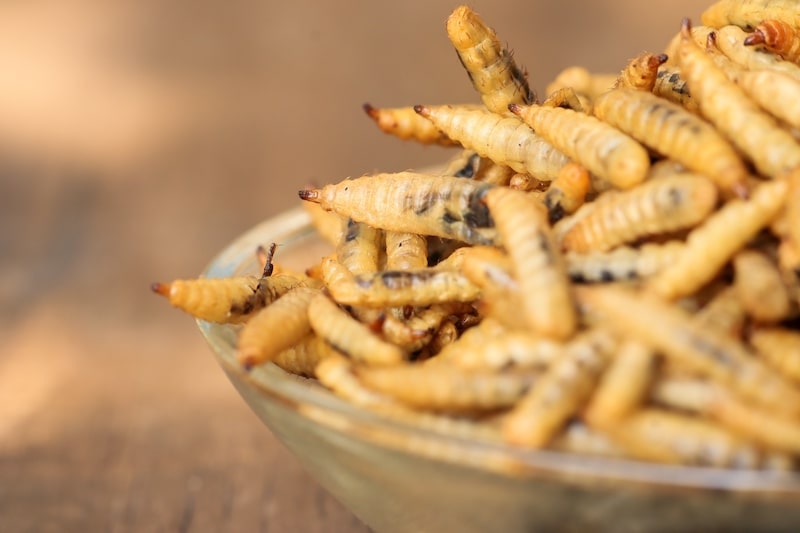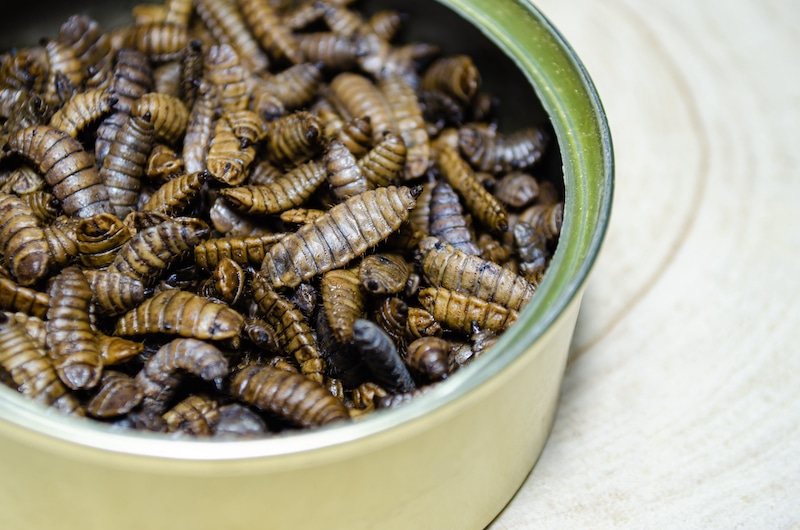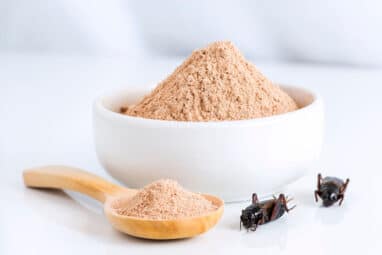The first post in this two-part series delves into a complex topic: using insects as a source of protein in pet foods. In that post, we summarize the global need for alternative protein sources, the advantages and disadvantages of using insect proteins, and some of the research on insects as a sustainable food source for humans and pets.
To wrap up our overview of the topic, this post explores the regulatory environment, the market landscape, and the future outlook for insect-based protein in pet foods.
First, a disclaimer: LANI is not intending to offer market forecasts or analytics in this article. The content of this post is a summary of what we found in various publications, seasoned with our own experience in the industry. Our internet research was wide-ranging but not comprehensive.
The U.S. regulatory scene
We would describe the regulatory environment for pet foods in the United States as deliberately cautious and thorough. From what we have read, industry observers consider America’s regulation of pet foods as less strict than Europe’s regulation and stricter than Canada’s.
The U.S. regulatory landscape for pet food is dominated by two organizations: the Federal Food and Drug Administration (FDA) and the Association of American Feed Control Officials (AAFCO).
The FDA can review claims made on product labels and set guidelines for pet foods. However, it appears the FDA gives manufacturers latitude to use ingredients deemed to be safe, as long as the ingredients are produced under sanitary conditions and are truthfully labelled.
The FDA can determine whether an ingredient has an appropriate function in a pet food product and whether an ingredient is a food, a drug, or an additive. Unlike animal drug products, products deemed to be foods do not require the FDA’s pre-market review.
According to the FDA, dog and cat foods claiming to treat or prevent diseases are drugs. However, the FDA says it will use “enforcement discretion” with such products if they are being marketed responsibly and are distributed only through licensed veterinarians.
There is some concern that the FDA could consider insects to be a food additive. Food additives require pre-market approval unless they fall into the “GRAS” category (generally accepted as safe), which requires a consensus among qualified experts.
AAFCO is a voluntary association with no regulatory authority. It does not certify any manufacturer’s pet food. AAFCO serves as a forum for stakeholders in federal agencies, state agencies, and private industry to create model regulations and define ingredients acceptable for pet foods. AAFCO publishes approved U.S. animal feed and pet food ingredient definitions, labeling requirements, and model regulations which state governments may adopt. (Most states have adopted AAFCO’s model bills.)
For a proposed new pet food ingredient, AAFCO’s approach requires scientific validation of the ingredient’s intended use. Usually, a panel of experts must examine the body of research submitted to AAFCO in support of a new ingredient proposed for the marketplace. AAFCO further states:
“We ask our Expert Panel to make sure the ingredient does what it is intended to do in the animal. If it does not, it cannot be legally used in animal feed or pet food in the U.S. Our process to define a new ingredient takes at least two years from start to finish.”
AAFCO follows this rigorous process not only for each proposed insect species (such as black soldier fly larvae), but also for each pet type and that pet’s life stage (such as adult dogs).
AAFCO has defined hundreds of acceptable ingredients through this process. So far, dried black soldier fly larvae (BSFL), in whole or meal form, for adult dog food is the only insect ingredient for pet food to get AAFCO’s approval.
What’s happening in the marketplace for pet foods with insect proteins?
Receptivity to insect ingredients in pet foods—and human foods, too—appears to be gaining traction on several fronts. In recent years we’re seeing many new product launches, along with new investments, new companies, new research, and joint ventures.
Examples from 2020, 2021 and 2022:
- Protenga, an international producer of insect protein raw material, raised $2 million in 2020 and another $2 million this year to expand its production capacity and launch its YumGrubs pet food line. (Source)
- Global pet food producer Nestlé Purina launched a BSFL-based protein food. (Source)
- French insect protein producer Agronutris invested $116 million to launch two new factories. (Source)
- Government researchers in Taiwan announced a technique for turning silkworm pupae into cat food that helps prevent the growth of harmful intestinal bacteria and eliminates the smell of cat feces. A survey found that 70% of cat parents would consider feeding their pet the silkworm pupae. (Source)
- 800 Petco stores in the U.S. will distribute Jiminy’s insect-based pet foods, bolstering Petco’s commitment to source more sustainable products. (Source)
- EnviroFlight, which operates a BSFL farm in Kentucky, announced it will open a research center in North Carolina to expand the knowledge base for alternative uses of BSFL in animal health, animal nutrition, and other applications. (Source)
- ADM, one of the world’s leading producers of food and beverage ingredients, announced a strategic partnership with InnovaFeed to construct the world’s largest insect protein processing plant in Illinois. (Source)
In addition to the AAFCO approval of BSFL for adult dog foods, 2021 also marked a milestone regulatory event in Europe: the approval of mealworm for human consumption.
Debbie Phillips-Donaldson, editor-in-chief of Petfood Industry and Petfood Forum, wrote about the growing momentum of insect-based foods last summer. Her June 2021 article in Petfoodindustry.com noted:
- Facility expansions and openings.
- A flurry of product and company launches, plus the entry of Nestle Purina and Mars into the insect pet food market.
- The acquisition of Protifarm, a large mealworm producer, by France-based Ynsct, resulting in the world’s largest insect food and feed player.
- A university study showing 70% of the participating U.S. pet households were willing to try insects in some form.

The clear leader of insect species being used to produce protein for pet foods is black soldier fly larvae. We found mentions of more than a dozen companies operating BSFL farms or using BSFL ingredients in their pet foods. They are located in countries all over the globe—including USA, Canada, Singapore, France, Netherlands, Spain, Ireland, Chile, Singapore, and Malaysia.
To date, most insect-based pet foods are made for dogs. Green Petfood in Germany and Lovebug in U.K. produce cat foods that include insect protein. At this time, AAFCO is not reviewing any proposals for insect-based cat food ingredients.
What’s the future outlook for insect-based pet foods?
Tim Wall, a senior reporter covering the pet food industry, interviewed industry executives who see tremendous growth potential ahead for insect-based ingredients as more consumers seek sustainable, nutritious products for their pets. It may take another five years or so, Wall wrote in Pet Food Industry recently, before the majority of pet food buyers have heard of insects in pet foods, but “cultural and economic forces seem to be encouraging use of insect-based pet food ingredients.”
Most industry observers, like Wall, are optimistic on the outlook for insect-based proteins in pet foods. However, many temper their enthusiasm by pointing out potential constraints on future growth:
- Needs for further research. Looking at Insects from a Food Safety Perspective, a 108-page paper published in 2021 by the United Nations, points out some safety issues and areas where research is lacking. Approaching Ecological Sustainability in the Emerging Insects-as-Food Industry, a study written by three researchers at the Swedish University of Agricultural Sciences, stated, “Most aspects of mass insect rearing relating to sustainability criteria and environmental impacts are uncertain or unknown.”
- The slow pace of the regulatory environment. Some regulators may be waiting for more research to address their concerns. Also, there may be a lack of industry advocates willing to pursue more ingredient approvals by AAFCO.
- Consumer aversion in Western nations to the idea of eating insects. Squeamishness may diminish when more people become concerned about future food shortages and the environmental costs of livestock.
- High costs of insect protein compared to meat protein sources. However, prices are likely to fall with increasing competition and improved productivity.
According to Future Market Insights (FMI), a market research firm, insect-based pet foods account for about 7% of the global pet foods market. FMI predicts the global market will grow from $7 billion in 2021 to $17+ billion in 2031. That’s a global growth rate of 9.3%; in the U.S., the CAGR is at 7.1%.
“Online retailing will remain the dominant distribution channel for insect-based pet food over the forecast period,” FMI’s report states.
Based on the detail we’ve reported here, you can see progress is being made in the pet food space using insects as a protein source. Obviously, it’s a complex and rapidly evolving topic. As the market expands, we may post an update to summarize new developments.


